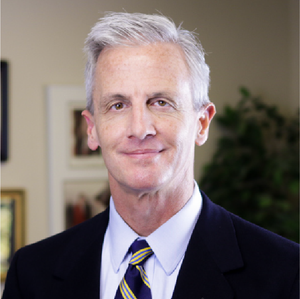Education
Brandon Dutcher | May 22, 2015
Education savings accounts will put parents in charge
Brandon Dutcher
Tennessee Gov. Bill Haslam signed legislation last week creating the nation’s fourth education savings account (ESA) program, joining Mississippi, Florida, and Arizona.
In a new paper (“Designing an Education Savings Account for Oklahoma”) published by the 1889 Institute, Vance H. Fried says it’s time for Oklahoma to join the ESA family. Fried, an attorney and Certified Public Accountant who currently serves as Riata Professor of Entrepreneurship at Oklahoma State University, explains:
At the parent’s direction, funds in their child’s account would be used for educational materials, tutors, private school tuition, and other education-related services. Account funding would vary by student and be equal to 100 percent of state aid. This is a sufficient amount for an education using private schools and tutoring. Funding should come from existing sources at the state level. All students who are currently enrolled in Oklahoma public schools should be eligible. ESAs would give Oklahoma parents control over their child’s education, provide the State with annual savings of $1,000 to $3,000 per participating student, and increase per-pupil funding at public schools.
As I never tire of repeating, it is parents—not government officials—who have the moral right to determine their child’s path. If policymakers are going to spend $9,547 per student (see table below), they should fund the students, not the system.
.png)
Now some would have you believe that ESAs are unhelpful because Oklahoma’s private schools are simply too expensive:
McGuinness tuition =$12,400 Heritage Hall =$13,925 Cascia Hall =$12,840 Casady =$18,525 OCS =$9,325 90% wt ADM for ESA = $2,150 #oklaed
— Dr. Jason James (@James409Jason) February 16, 2015
But that is akin to telling someone who needs reliable transportation in order to get to and from work: “You might as well forget it. A Mercedes-Maybach would cost you $175,000, a convertible Corvette is more than $80,000, and even an Escalade could run you more than $70,000. You can’t afford a vehicle.”
In truth, the average private school tuition in Oklahoma is $4,521 for elementary schools and $6,897 for high schools, according to Private School Review. [2016 update: According to Tulsa public school teacher John Lepine, a research fellow for the liberal Oklahoma Policy Institute, “the average private elementary school tuition in Oklahoma [is] $4,683; for high schools, that number jumps over $7,000.”]
As Fried points out, “private school tuition varies dramatically by school. [The table below] shows tuition at a sample of schools around the state. A few charge substantially more than the public schools spend per student, but most charge less, dramatically less in some cases. This is particularly true in the earlier grades. The cost gap between private schools and public schools is even more dramatic when one includes online schools.”
.png)
Fried proposes that ESA funding be set at 100 percent of state aid—which is the base amount of $3,035, adjusted upward by hundreds or even thousands of dollars based on grade level and special student characteristics (low-income, bilingual, learning disabled, gifted, etc.). It’s clear that ESAs will enable more Oklahoma parents to afford the best educational options for their children.

Brandon Dutcher
Senior Vice President
Brandon Dutcher is OCPA’s senior vice president. Originally an OCPA board member, he joined the staff in 1995. Dutcher received his bachelor’s degree in political science from the University of Oklahoma. He received a master’s degree in journalism and a master’s degree in public policy from Regent University. Dutcher is listed in the Heritage Foundation Guide to Public Policy Experts, and is editor of the book Oklahoma Policy Blueprint, which was praised by Nobel Prize-winning economist Milton Friedman as “thorough, well-informed, and highly sophisticated.” His award-winning articles have appeared in Investor’s Business Daily, WORLD magazine, Forbes.com, Mises.org, The Oklahoman, the Tulsa World, and 200 newspapers throughout Oklahoma and the U.S. He and his wife, Susie, have six children and live in Edmond.